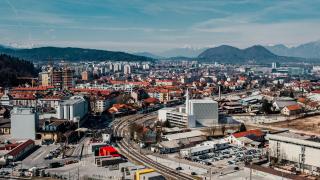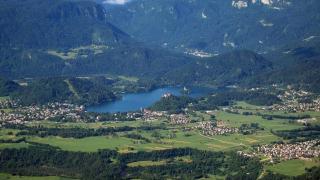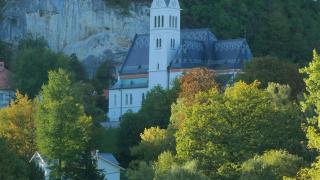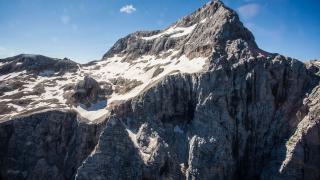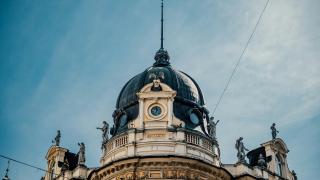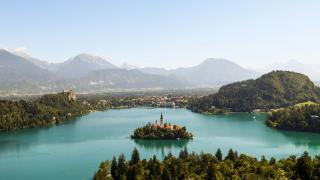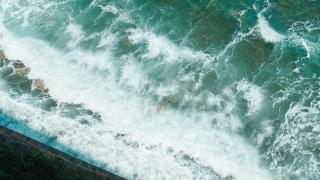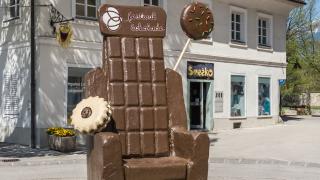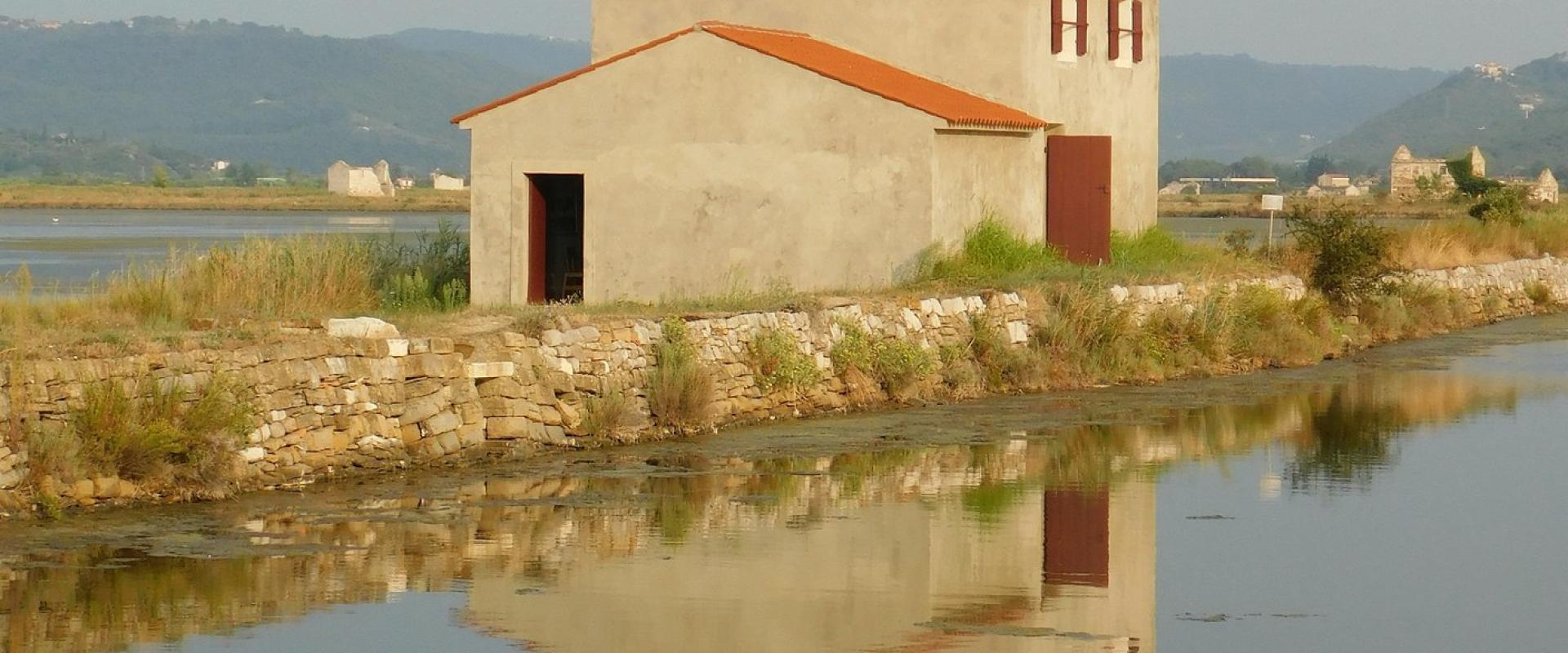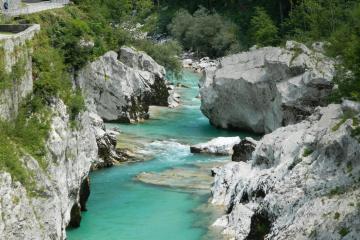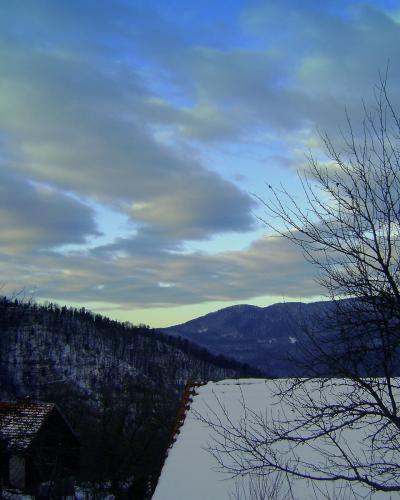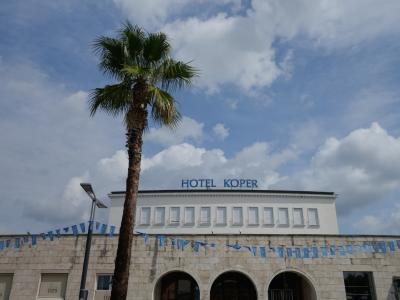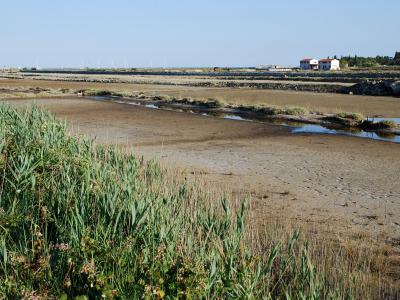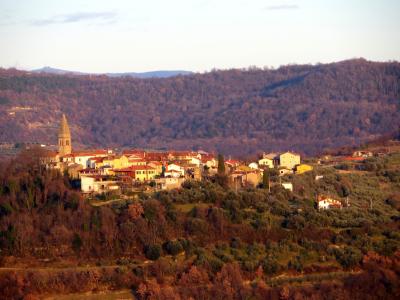Sečovlje
Salt pans, nature park, and Mediterranean river valley
Sečovlje, located at the southwestern tip of Slovenia near the Adriatic Sea, is a destination that stands out for its harmonious blend of natural beauty, cultural heritage, and traditional industry. The village’s history is inseparable from the Sečovlje Salina Nature Park, where salt has been harvested using age-old methods for over 700 years. The salt pans, covering more than 650 hectares, are a living museum and a vital habitat for over 270 species of birds, making the park one of the most important wetland reserves in the region.
The main attraction is the Sečovlje Salina Nature Park, divided into two sections: Lera, where salt is still produced, and Fontanigge, a protected area with abandoned pans, historic salt workers’ houses, and the evocative Tonina House museum. Guided tours and interpretive trails introduce visitors to the fascinating world of salt production, the unique ecosystem of the pans, and the cultural traditions of the salt workers. The park is especially popular with birdwatchers, who can spot flamingos, herons, avocets, and other rare species throughout the year.
Beyond the salt pans, Sečovlje offers a range of outdoor activities. The Dragonja River Valley is a scenic area for hiking, cycling, and exploring hidden waterfalls such as the Škrline. The area’s Mediterranean climate supports lush vegetation, olive groves, and vineyards, while the proximity to the sea brings a gentle breeze and a relaxed coastal atmosphere. Tandem skydiving and panoramic tours are available for those seeking a unique perspective on the landscape.
Cultural highlights include the Tonina House, a museum dedicated to the history and daily life of salt workers, and local festivals that celebrate salt harvesting and regional cuisine. The village’s restaurants and inns serve fresh seafood, Istrian specialties, and local wines, offering a taste of the area’s culinary heritage.
Sečovlje is easily accessible by car, located just a short drive from Portorož, Piran, and the Croatian border. Public transport options are available from nearby coastal towns, and the area is well connected by cycling routes. Parking is available at the entrance to the nature park, and the park itself is best explored on foot or by bike.
The best time to visit Sečovlje is from May to October, when the weather is warm and sunny, ideal for walking, birdwatching, and exploring the salt pans. Spring and autumn offer mild temperatures and fewer crowds, while summer brings vibrant activity to the saltworks and local festivals.
With its rare combination of living tradition, biodiversity, and Mediterranean tranquility, Sečovlje is a destination that rewards curiosity and invites visitors to discover the hidden treasures of Slovenia’s coast.
Best Time to Visit
May to October offers warm, sunny weather for exploring the salt pans, birdwatching, and walking; spring and autumn are mild and less crowded.
Plan Your Visit to Sečovlje
Essential travel tips and information for your trip to Sečovlje.
Travel Tips
Currency
Euro (EUR) • Cards widely accepted
Language
Slovenian • English in tourist areas
WiFi
Free WiFi in cafes and hotels
Explore Sečovlje by Interest
Discover attractions and experiences in Sečovlje organized by your interests and travel preferences.
All attractions in Sečovlje
Sorted by our recommendation score
Quick Facts
Book your stay
More destinations in Piran & Istrian Coast
Explore other amazing places in the Piran & Istrian Coast region
